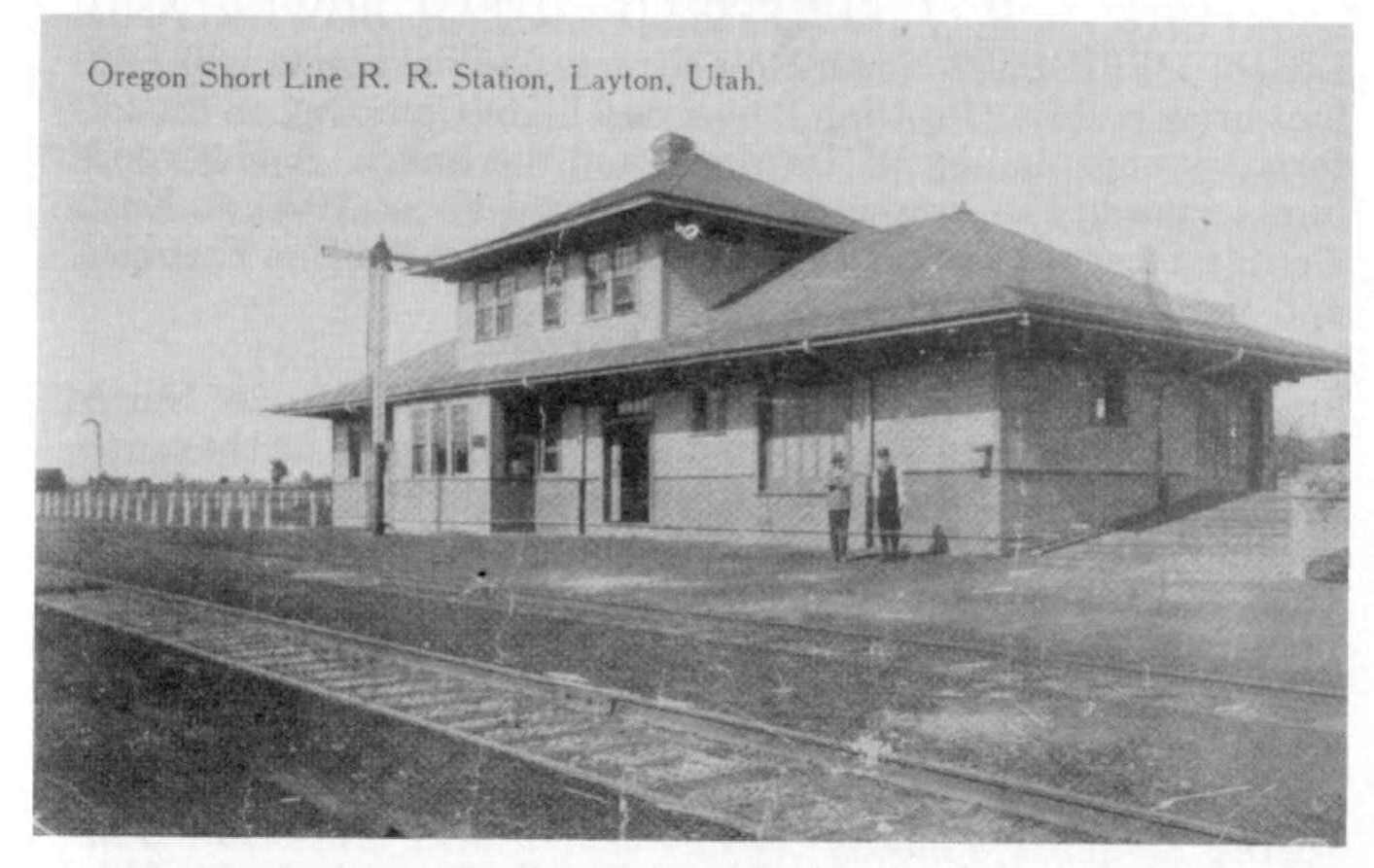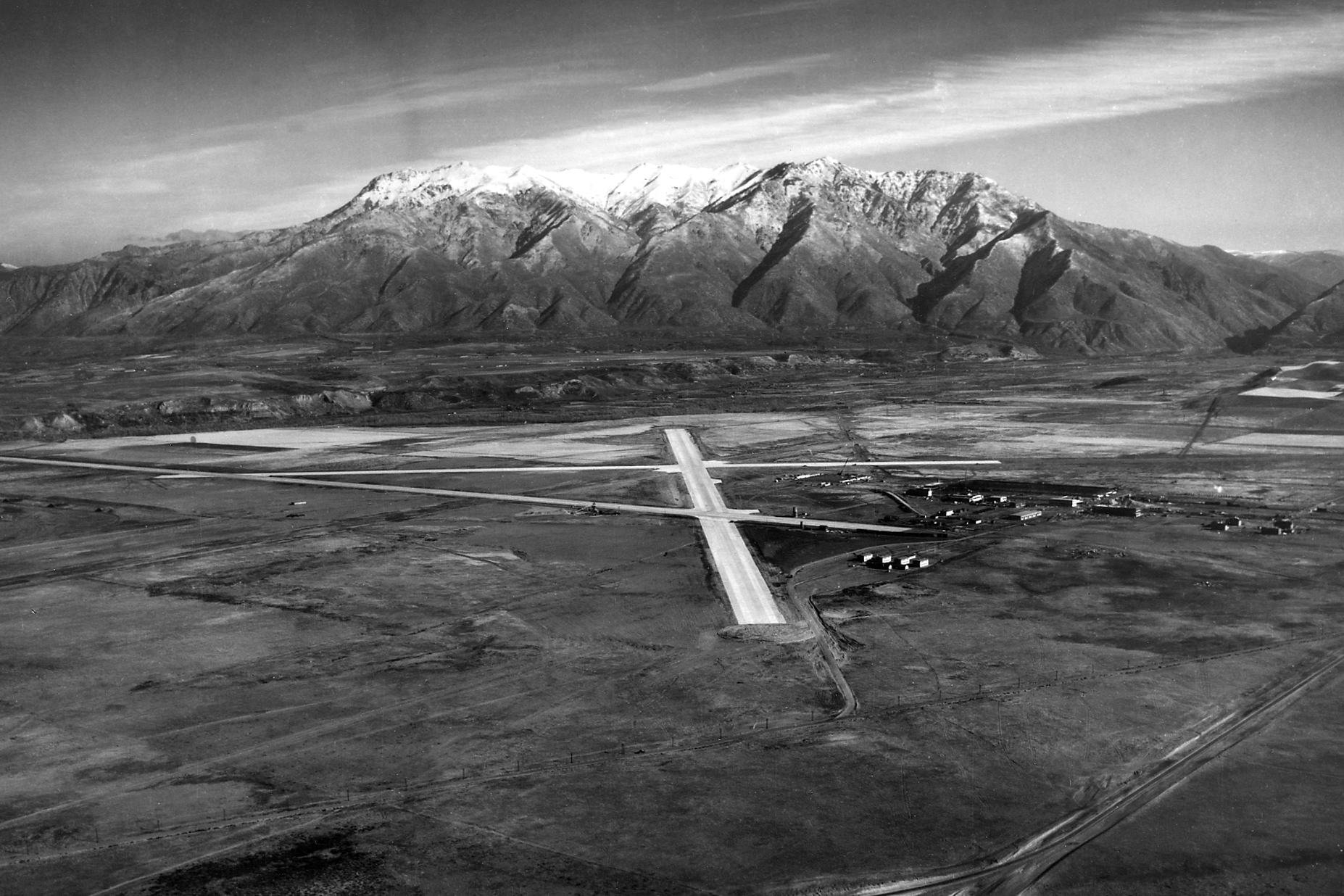In 1850 as an agricultural extension of Kaysville, Utah. Although the settlers of Kaysville laid out streets and established a town plan and city center in 1854, the area north, now Layton, remained rural, unorganized and unplanned. Mormon pioneers first settled the area and established farms along the banks of local streams.
Within a year of the first settlers planting crops and building cabins there were almost 300 people living in the Layton area. The majority of these families were from England or were New Englanders. Most early immigrants were from the working class with only a handful who had at least some farming experience. The challenges of farming in a semi-arid desert environment were learned from hard work and firsthand experience.
Following the building of a wagon road between Salt Lake City and Ogden, Utah, several mercantile and trade establishments were founded along what is now known as Layton’s Main Street. In the late 1860’s the Utah Central Railway was built with tracks running parallel to Main Street. Several business were opened including workshops, blacksmiths, shoemakers, tanners, harness makers, weavers, carpenters, rock masons, etc. Other Layton City settlers built flourmills, made adobe bricks, or were innkeepers.

Since Layton was an expansion of Kaysville, settlers did not build their homes around a city block plan or a central fort. However, fort districts were soon established in 1854 for protection from local Native American activity. One structure was built on the east side of town, south of what is currently known as Fort Lane Street.
The earliest recorded mercantile businesses in Layton included the Burton, Herrick and White Company, Barton and Company, Adams and Son’s Company, the Kaysville Farmer’s Union (later the Farmer’s Union of Layton), the William A. Hyde store, the A. H. Ellis Mercantile store, and the Layton Golden Rule (JC Penney). With time, these establishments became the hub of Layton’s business district, and their activities helped the community move to make Layton a separate and distinct town.
In 1886, with the establishment of a Post Office, the area became known as Layton. The name Layton was given to the community in honor of Christopher Layton, an early bishop in the Church of Jesus Christ of Latter-day Saints and local property owner. The people living in Layton eventually separated from Kaysville and a new town was officially incorporated in 1920.
In 1943, Hill Air Force Base (HAFB) located to the area, boosting economic energy and vitality. In 2022 the base created approximately $4.6 billion for an estimated 57,175 local jobs, was responsible for $8.9 billion in total annual economic impact, and employed 25,480 personnel (largest single employer in Utah). The Compatible Use Plan completed in 2022 estimates that 20% of the military personnel employed by HAFB and their families who live off Base live in Layton, the highest by far of all other Utah cities. Extrapolating this same data would indicate that approximately 1 in every 7.4 homes, of over 28,000 homes in Layton, include someone with a job that was created by the operation at HAFB.
Today, Layton is home to just over 85,000 citizens who enjoy a thriving economy with consistent growth in business and career opportunities, immediate access to Utah’s great outdoors, a variety of shopping and dining opportunities, excellent education, and art, music, community and cultural events. With convenient access to Salt Lake City all areas of northern Utah, the Salt Lake International Airport, and a City with a vibrant culture and robust economic growth, it’s no wonder Layton City has achieved rankings as one of the best cities to live.
